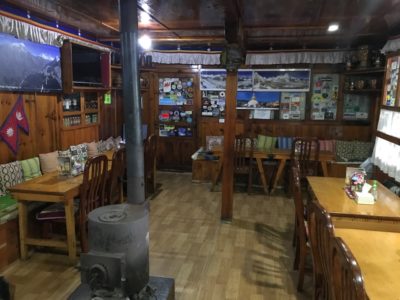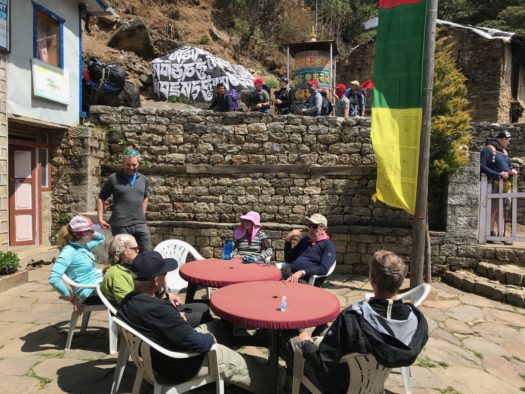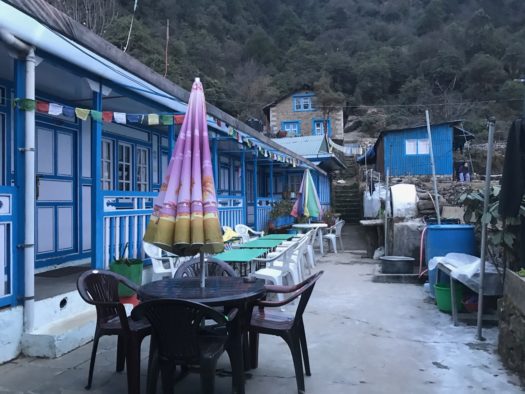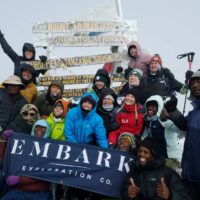What is it Like in Nepali Teahouses?
06.12.2018

For all non-camping Himalayan treks — and this includes Mt. Everest Base Camp and the Annapurna Circuit in Nepal — the basic accommodations are in teahouses. But what is a Nepali tea house, and what is it like to stay there?

First, we should explain that they don’t just serve tea, and they aren’t houses. They are basically hotels with a common seating and eating area. Most are quite rustic, with no heat beyond a stove in the common area, and most rooms consist of two simple beds with a mattress, pillow and blanket.
Some teahouse rooms come with private bathrooms, and some bathrooms — private or not — have western-style flush toilets. For the most part, though, you should assume your Nepali teahouse accommodations consist of a small room with two beds, a squat toilet down the hall, and no heat — but a cozy, comfortable and fun common area with surprisingly good and diverse food.
It’s the common area where you will spend most of your time. This is a large room with windows and padded benches all around, tables in front of the benches, a few chairs, and a stove in the middle. (The most common fuel in the stoves is dried yak dung, but the smell isn’t a problem.)
You will typically arrive in the early afternoon from your day on the trail, drop your packs in your room and sit with your fellow hikers for a tea and perhaps some popcorn or another snack. There will be a small counter where you can purchase candy bars, chips, soft drinks, bottled water and necessities like toilet paper.
It is possible to do laundry, but it will be up to you to do it by hand, and drying the clothes can be an issue. This is best done on a rest day or when you have an entire sunny, warm afternoon free.
For a few hundred rupees (at roughly 100 per dollar), you can plug in mobile devices to charge, arrange for a hot shower (which might just be a bucket of hot water) or purchase some WiFi time. Internet is available in most places below Lobuche, and you will either pay for a password or purchase an EverestLink card that comes with a set amount of data and is used at many teahouses. (Here is more on WiFi on trek.)

Afternoon consists of down time to rest and recuperate, but also to sit around and swap stories with the other folks in the teahouse. (Most places sleep 20 to 40 people.) Sipping tea and meeting people around the stove will be a highlight of your trip.
At some point you will order dinner from a menu; choices will typically include pasta, soups, pizza, sandwiches, dumplings called mo-mo’s, and the traditional Nepali dish, Dahl Bhat, which is simply rice with lentil stew and perhaps some curried vegetables on the side. It’s very filling, varies quite a bit from village to village, and unlike other dishes has the advantage of being “All You Can Eat.”
When you order, you will pick a time for dinner, usually around 6 or 7 p.m., and rejoin your group then for a relaxed and fun meal. After dinner, and after ordering a dish and time for breakfast, most people will head for bed. Once the sun goes down, and after all the hiking you’ll be doing, and with a warm filling meal in your belly, heading for your sleeping bag for a long sleep will be very appealing.



